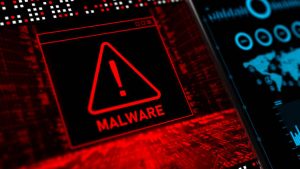In the digital age, cybersecurity threats have become a growing concern for individuals and businesses alike. One of the most prevalent and dangerous types of cyber threats today is ransomware. This malicious software is designed to block access to a computer system or its data until a sum of money is paid, often causing severe disruption to daily operations and potentially resulting in data loss.
Ransomware attacks have been on the rise, targeting everyone from individual users to large organizations and even critical infrastructure sectors such as healthcare and government agencies. Understanding how ransomware works, its different types, and how to protect yourself is essential to safeguarding your digital life. In this article, we’ll dive deep into what ransomware is, how it operates, and the best practices for defending against it.
What Is Ransomware?
Ransomware is a type of malicious software (malware) that encrypts files on a victim’s computer or network, rendering the data inaccessible. Once the system is compromised, the attacker demands a ransom payment, typically in cryptocurrency, to provide the decryption key needed to unlock the files. Victims are usually given a short period to comply, with threats of permanently deleting the data or increasing the ransom amount if their demands are not met.
Ransomware attacks can spread through several vectors, including:
- Phishing emails with malicious attachments or links.
- Malicious websites that exploit vulnerabilities in the user’s browser or plugins.
- Infected software updates from compromised websites.
- Unsecured Remote Desktop Protocols (RDP) that provide attackers with direct access to a network.
Types of Ransomware
Ransomware comes in various forms, each with its own unique way of targeting victims. Here are the most common types:
- Crypto Ransomware: This is the most prevalent type of ransomware, encrypting files on the victim’s system. The user can see their files but cannot access them without the decryption key. Examples include the infamous WannaCry and CryptoLocker attacks.
- Locker Ransomware: Unlike crypto ransomware, locker ransomware locks the victim out of their entire system, making it impossible to use the computer until the ransom is paid. It typically displays a full-screen message, often mimicking law enforcement agencies, to scare victims into compliance.
- Double Extortion Ransomware: In double extortion, attackers not only encrypt the files but also threaten to leak sensitive data online if the ransom is not paid. This adds an extra layer of pressure on organizations that handle confidential information.
- Ransomware-as-a-Service (RaaS): RaaS is a growing trend where cybercriminals offer ransomware tools for a share of the ransom profits. This model allows less sophisticated hackers to launch attacks without having technical expertise.
How Ransomware Infections Happen
Ransomware infections often begin with a user’s interaction, such as clicking on a malicious link or downloading an infected attachment. Once inside a system, ransomware goes through several stages:
- Initial Access: The malware is introduced into the system through methods like phishing, malicious downloads, or exploiting a software vulnerability.
- Execution and Encryption: The ransomware activates and begins encrypting files. During this stage, the user may not notice any immediate symptoms, as modern ransomware is designed to operate stealthily.
- Demand for Ransom: Once the files are encrypted, a ransom note is displayed, usually in the form of a text file or a pop-up window, explaining what has happened and providing instructions on how to pay the ransom.
- Decryption or Loss: If the victim decides to pay the ransom, there is no guarantee that the attacker will provide the decryption key. Even if the key is given, residual malware may still linger in the system, leaving it vulnerable to future attacks.
Real-World Impact of Ransomware Attacks
Ransomware attacks can have devastating consequences, including:
- Financial Losses: The cost of a ransomware attack can be staggering, not just in terms of the ransom payment but also due to operational downtime, lost business opportunities, and the expense of recovering compromised systems.
- Data Loss and Compromise: In cases of double extortion, organizations face the risk of sensitive data being publicly leaked, leading to potential legal ramifications and loss of customer trust.
- Reputational Damage: Organizations that fall victim to ransomware may suffer long-term reputational damage, making it difficult to regain the confidence of clients and partners.
Best Practices for Protecting Against Ransomware
To defend against ransomware, a comprehensive approach that combines technology, processes, and user education is crucial. Here are some of the most effective practices to safeguard your digital assets:
- Regular Data Backups: Regularly backup your data and ensure that backups are stored offline or in a secure cloud environment. This ensures that even if your files are encrypted, you can restore them without paying a ransom.
- Use Strong Security Software: Invest in reputable antivirus and anti-malware software with real-time protection. Ensure that the software is set to automatically update and scan your systems regularly.
- Keep Your Systems Updated: Outdated software often contains vulnerabilities that hackers can exploit. Regularly update your operating system, software, and applications to close potential security gaps.
- Implement Multi-Factor Authentication (MFA): MFA adds an additional layer of security by requiring a second form of verification (such as a text message code or authentication app) to access your accounts.
- Disable Unnecessary Services and RDP: Disable Remote Desktop Protocol (RDP) if it’s not needed. Many ransomware attacks exploit unsecured RDP connections to gain access to networks.
- Limit User Privileges: Restrict administrative privileges to only those who need it. This limits the ability of ransomware to spread across the network if a single account is compromised.
- Train Employees on Security Awareness: Employees should be regularly trained on how to identify phishing emails, suspicious links, and other common attack vectors. Conduct simulated phishing tests to assess and improve their response.
- Use Network Segmentation: Divide your network into segments to limit the spread of ransomware. This ensures that even if one part of the network is infected, the rest remains safe.
Responding to a Ransomware Attack
If you suspect a ransomware infection, take immediate action:
- Disconnect the Infected System: Isolate the infected device from the network to prevent the ransomware from spreading.
- Do Not Pay the Ransom: Paying the ransom does not guarantee data recovery and may encourage further attacks.
- Restore Data from Backup: If you have a clean backup, use it to restore your system to its pre-infection state.
- Contact a Cybersecurity Professional: Reach out to cybersecurity experts who can help contain the attack, investigate its source, and strengthen your defenses.
Final Thoughts and Next Steps
Ransomware is a formidable threat, but with the right precautions and security measures, you can significantly reduce the risk of falling victim to an attack. It’s important to stay vigilant, keep your systems updated, and ensure that both you and your employees are aware of the potential dangers.
If you have concerns about ransomware or any other cybersecurity issues, Techie Kumar is here to help. Our team of experts can assist with everything from setting up secure backups to performing a full cybersecurity audit of your business. Don’t wait until it’s too late—contact Techie Kumar today to secure your digital future!

